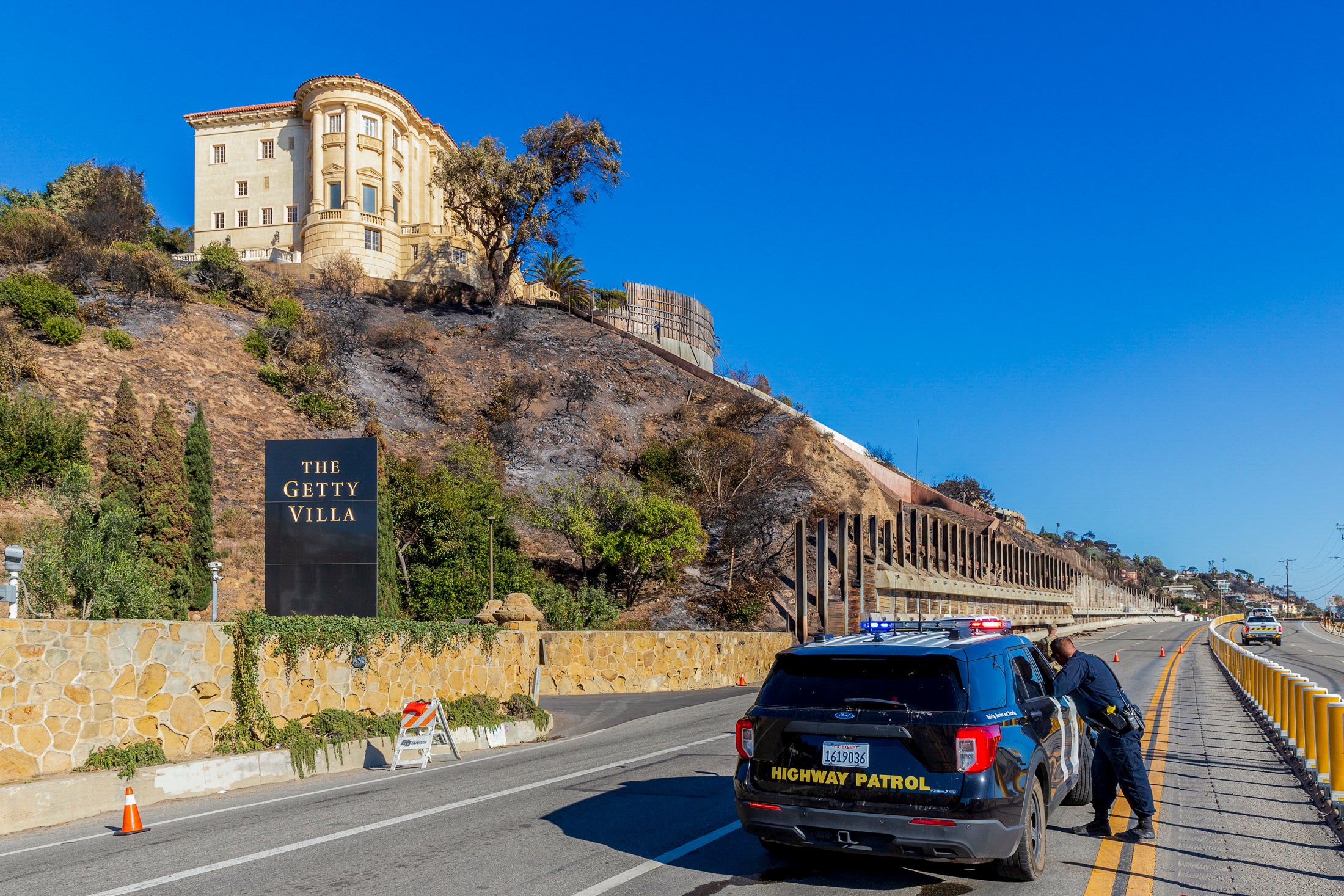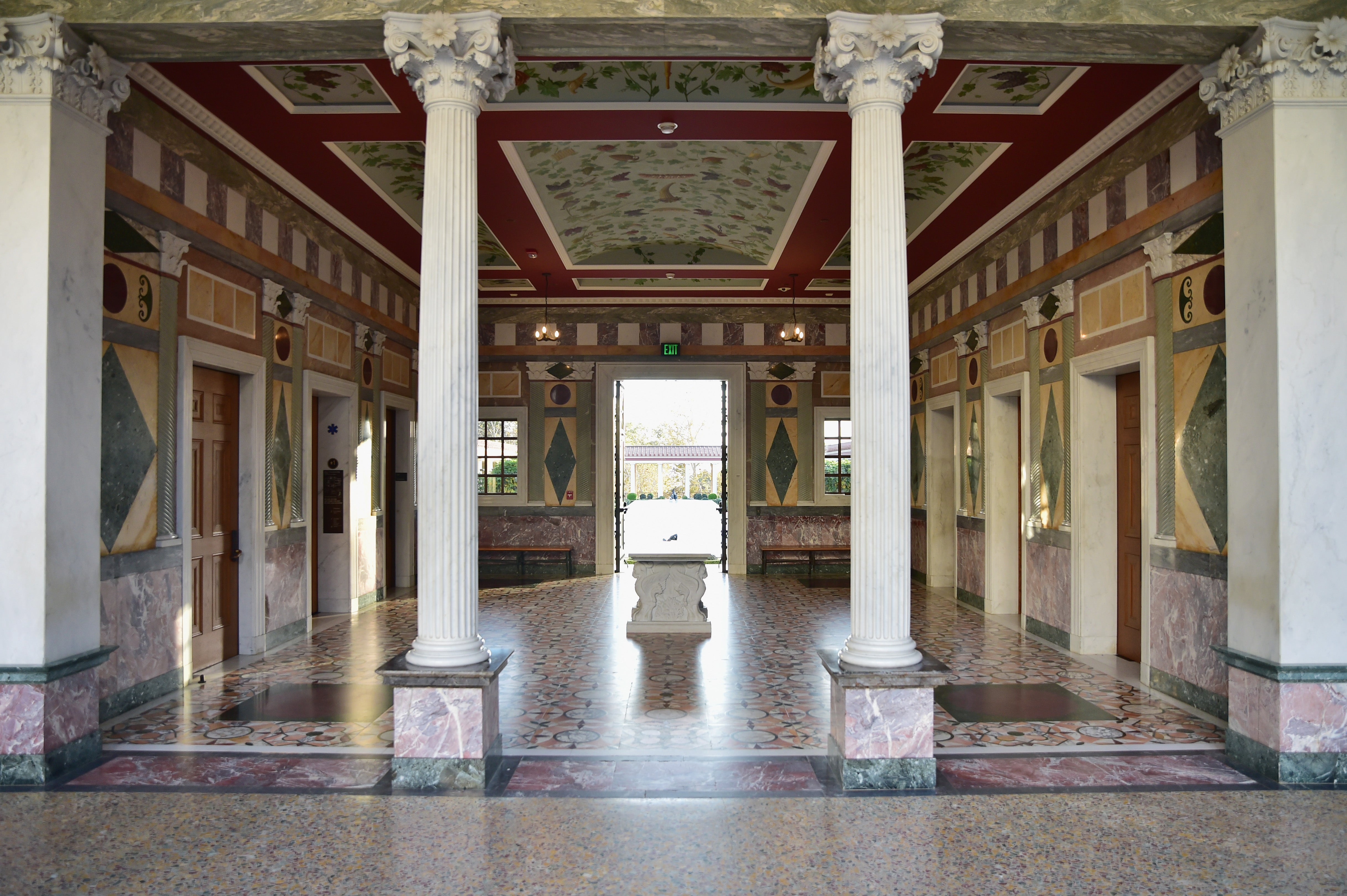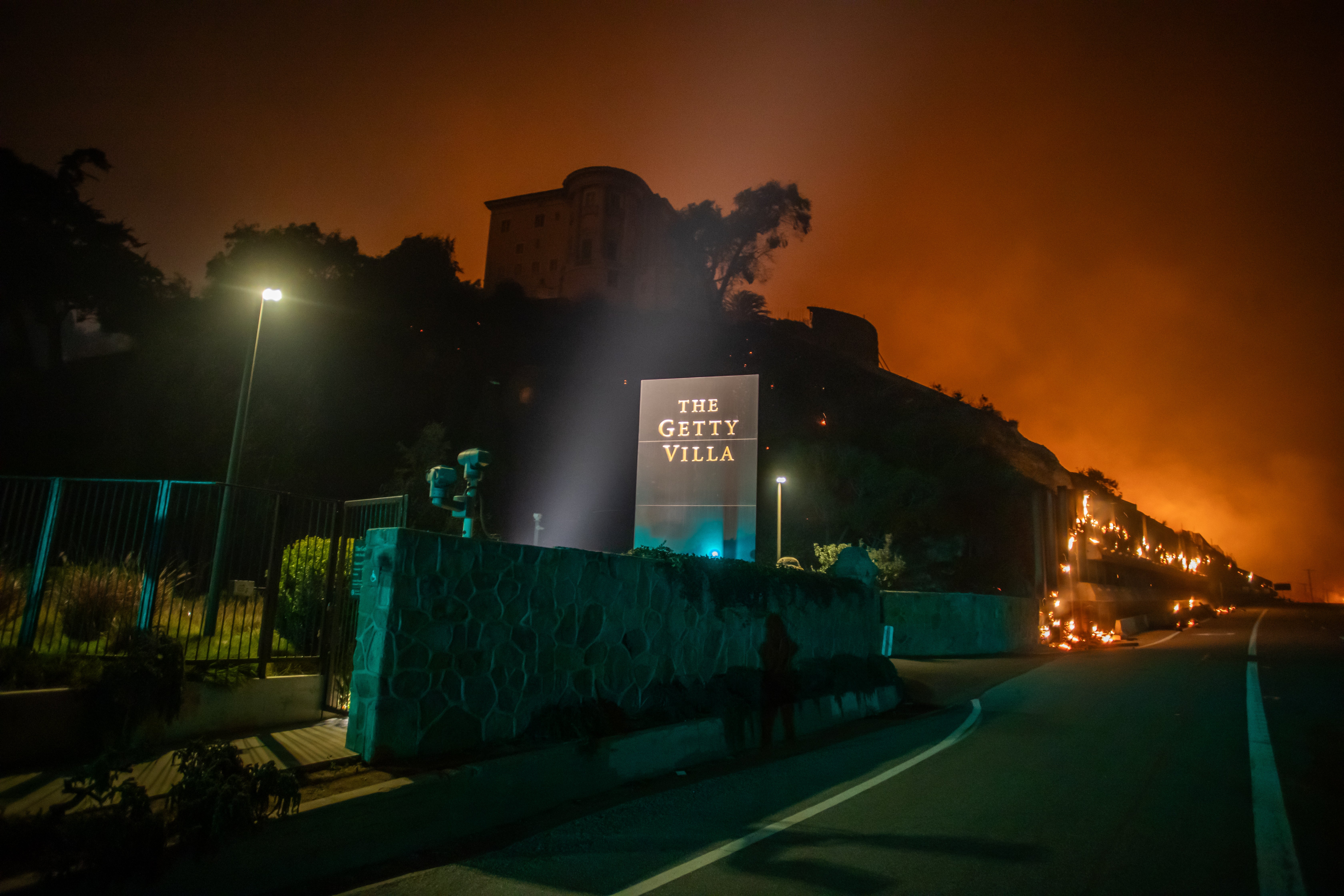How the Getty Museum survived LA wildfires as the super-rich take note
As the fires rampaged through the five different suburbs of LA, they didn’t discriminate in who was affected. But, then those with means started doing things differently. Zoë Beaty reports
It was called a “marvel of anti-fire engineering” – the Getty Centre, a mecca for culture sitting high in the Brentwood hills of Los Angeles, last week teetering under threatening red clouds of smoke. Just ten miles away in Malibu, its sister building, the Getty Villa, facing flames that crept up to just six feet from its walls. Surrounding it, the trees and vegetation by the Villa’s pools and fountain structures were scorched by the fire ravaging LA. Inside, a remarkable feat: more than 125,000 objects, including 44,000 works of art and Greek and Roman antiquities, remain safe and perfectly preserved.
Following the widespread devastation caused by the deadly wildfires in Los Angeles – which have already killed 25 people and led to the emergency evacuation of more than 150,000 – thousands of homes, museums, schools and places of worship have been reduced to ashes.
As of Monday morning, more than 40,000 acres had been consumed by the flames. This week, the city is braced for further devastation as winds are expected to pick up and fan the fires once again.
It is thought to be the costliest wildfire in history, with losses already expected to exceed $135bn (£109.7bn). No single cause for the fires has yet been established, though fire chiefs have criticised the local government for failing to anticipate the event and for not allocating sufficient funding for firefighting and working hydrants throughout the city.
The Getty Villa, separate from the main museum in Brentwood, was designed by Robert E Langdon Jr and Ernest C Wilson Jr, opened in 1974 and has since been renovated. Although it wasn’t in the fire zone, the blaze reached the grounds on 7 January, yet the museum was prepared for what could come next.
In a statement five days later, the J Paul Getty Trust confirmed that the museum remained “safe and stable”. “Our facility was built to withstand the various challenges this region tends to throw our way,” president and CEO of the Getty Trust, Katherine E Fleming, said on Tuesday morning, “earthquakes and forest fires and brush among them”. She explained that the building’s foundations were designed to protect its possessions, with “travertine on the outside, reinforced concrete on the inside”.
The Getty Centre complex cost $1.3bn to construct over five years, and its disaster preparedness spans from the fire-resistant materials used in its construction to its strategic location and dedicated water reserves for rapid-response firefighting. Inside, the galleries are designed as self-contained modules with an early-warning smoke evacuation system that seals them off to stop smoke and fire from spreading.
Meanwhile, the rooftops are made from crushed stone to prevent falling embers from igniting, and the surrounding vegetation is landscaped to limit brush growth that could fuel a wildfire.
Beneath the grounds of the Getty Villa lies a network of pipes that allow sprinklers to activate immediately. To mitigate earthquake risks, special display cases have been designed to protect objects during ground tremors.

As many survey the devastation caused by the fires, attention has been drawn to what the Getty Museum did to protect itself. For most people in the surrounding areas at the heart of the fire zone, irreparable damage was unavoidable.
Many people who had already been evacuated after a state of emergency was declared watched in horror as their homes and possessions were engulfed and destroyed on TV screens. In the days that followed, hundreds returned to sift through the rubble “to make it real” or to salvage prized possessions.
One resident, Greg Benton, told Associated Press reporters that he was searching the remains of his Pacific Palisades home of 31 years in the hope of finding his great-grandmother’s wedding ring. “It’s those small family heirlooms that hurt the most,” he said.
It’s this – the clarity of what is valuable, and to whom – that has gradually become the undertone the fire has left behind. Natural disasters are indiscriminate, experts continued to warn throughout the week: the climate crisis cannot be bribed, and wealth cannot always protect against it. Yet, as we saw this week, even amid the devastation, money – and who has it – still determines what worldly goods are protected.

As Hollywood’s elite began announcing their losses via social media last week, the “eat the rich” sentiments of Gen Z and Millennials crescendoed. “Am I supposed to care about the rich whose homes were burnt to a crisp? Because I don’t,” one user posted on X (Twitter), among many similar sentiments. Elsewhere, headlines such as: “Shame on the abhorrent A-listers who have just done the most egregious thing imaginable amid the LA fires (but is anyone shocked?)”, further stoked the flames.
In one piece, singer Mandy Moore was criticised for asking her followers for donations to her in-laws’ $60,000 crowdfunder after they lost their home. Meanwhile, a bizarre video of Spencer Pratt discovering his giant rose quartz – likely worth thousands of pounds – in the remnants of his home was an uncomfortable watch and went viral on TikTok.
On Sunday, the so-called class war ignited by the fires became even more visible as reports emerged of wealthy families hiring private firefighters to protect their homes while neighbouring buildings burned, sparking widespread criticism.
“Does anyone have access to private firefighters?” one Palisades resident wrote on X. “Will pay any amount.” The backlash was so intense that the author was forced to deactivate their account. It neatly illustrated the issue – the privilege of affording protection and safety when others cannot.

In Los Angeles, a city of extreme socio-economic disparity, where more than 50 billionaires reside and 16.5 per cent of the population lives in poverty, the ability to rebuild raises serious concerns. Questions have already been raised about who has the financial means to engage lawyers, to advocate with insurance firms facing hefty payouts, to move away, or to fund expensive shelters. Those without such options remain the lesser-seen victims of the disaster. Insecurity is not experienced equally.
Meanwhile, the wealth disparity in contributions to climate change looms uncomfortably in the background – the richest 1 per cent of humanity is more responsible for the climate emergency than the poorest 66 per cent, who ironically suffer the most from its consequences, a 2023 report found.
As the fire continues to devastate LA, and as residents come to terms with their losses and an uncertain future, our collective empathy for those affected is crucial. Perhaps, as LA begins to assess the damage, it’s time to reflect on what we truly value.
In the case of Getty, foresight and funding protected its treasures. In the future, as more disasters driven by the climate emergency inevitably occur, those searching through the rubble for their histories deserve more protection too. As LA considers its next steps, better governance, equitable aid, access to insurance and protection, and prioritising the planet would be a good place to start.





Join our commenting forum
Join thought-provoking conversations, follow other Independent readers and see their replies
31Comments